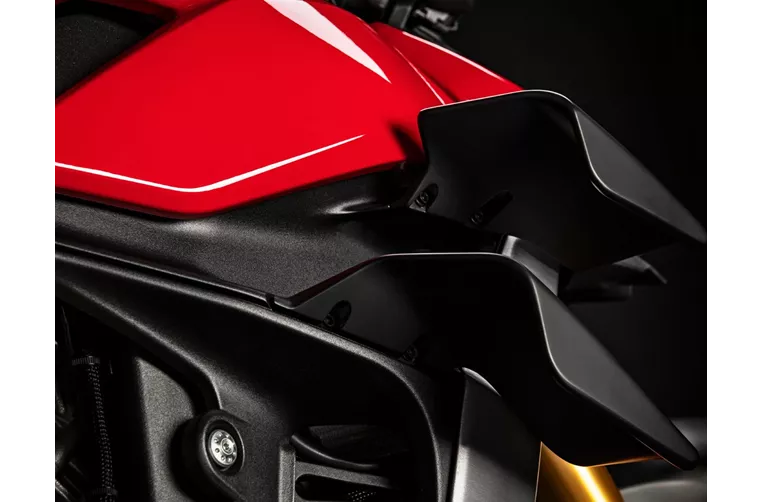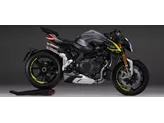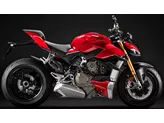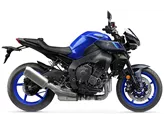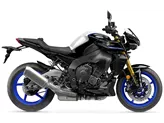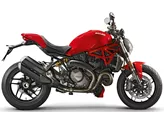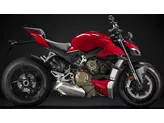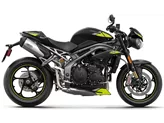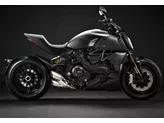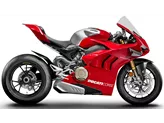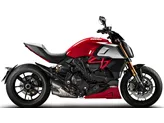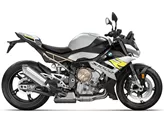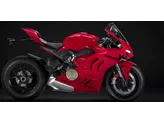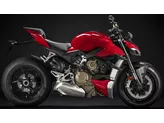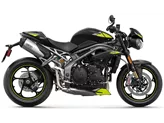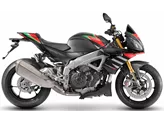Ducati Streetfighter V4 S 2020 vs. Yamaha MT-10 SP 2019

Ducati Streetfighter V4 S 2020

Yamaha MT-10 SP 2019
Overview - Ducati Streetfighter V4 S 2020 vs Yamaha MT-10 SP 2019
The Ducati Streetfighter V4 S 2020 and the Yamaha MT-10 SP 2019 are both powerful naked bikes with impressive features. Let's compare them in detail.
Starting with the engines, the Ducati Streetfighter V4 S 2020 is equipped with a V4 engine that produces an impressive 208 HP of power and 123 Nm of torque. On the other hand, the Yamaha MT-10 SP 2019 features an inline 4-cylinder engine that delivers 160 HP of power and 111 Nm of torque. The Ducati clearly has the upper hand in terms of power.
In terms of suspension, both bikes have upside-down telescopic forks at the front, with Öhlins being the brand for both. They also offer adjustments for compression, preload, and rebound. However, the Ducati has a single swing arm at the rear, while the Yamaha has a swing arm. Both bikes have Öhlins shock absorbers at the rear, with adjustments for compression, preload, and rebound. The rear suspension material is aluminum for both bikes.

Ducati Streetfighter V4 S 2020
Moving on to the chassis, both bikes have aluminum frames. However, the Ducati Streetfighter V4 S 2020 has a monocoque frame, while the Yamaha MT-10 SP 2019 has a Deltabox frame.
In terms of brakes, both bikes have double disk brakes at the front. The Ducati has larger 330 mm diameter disks, while the Yamaha has 320 mm diameter disks.
When it comes to advanced rider assistance systems, both bikes offer ABS, riding modes, and ride by wire. The Ducati also offers additional features such as dynamic suspension, cornering ABS, launch control, traction control, and anti-wheelie. The Yamaha, on the other hand, offers electronically adjustable suspension and traction control.
In terms of dimensions and weights, the Ducati has a slightly wider rear tire at 200 mm compared to the Yamaha's 190 mm. The Ducati also has a longer wheelbase at 1488 mm, while the Yamaha has a shorter wheelbase at 1400 mm. The seat height is slightly higher on the Ducati at 845 mm compared to the Yamaha's 825 mm. The Ducati is also lighter, weighing 199 kg compared to the Yamaha's 210 kg. Both bikes have similar fuel tank capacities, with the Yamaha having a slightly larger capacity at 17 liters.

Yamaha MT-10 SP 2019
Now let's discuss the strengths and weaknesses of each bike. The Ducati Streetfighter V4 S 2020 has an electronics package at the top level, a high-revving and powerful engine, agile handling, a surprisingly comfortable seating position even for tall riders, powerful brakes, a sporty and high-quality chassis, great aerodynamics, and an eye-catching design. However, it requires high revs for fear-inducing performance, has a somewhat rough engine response in city traffic, tippy handling at low speeds, and changing engine noise depending on speed and flap position.
The Yamaha MT-10 SP 2019, on the other hand, has an unconventional sound, a high-quality chassis and suspension, pleasant wind protection, a surprisingly comfortable seating position, and great engine response. However, it lacks traction control with a gyro sensor, the shift assistant is not flawless, and it has a high price.
In conclusion, both the Ducati Streetfighter V4 S 2020 and the Yamaha MT-10 SP 2019 are impressive naked bikes with their own strengths and weaknesses. The Ducati offers more power, advanced rider assistance systems, and a sportier design, while the Yamaha provides a unique sound, comfortable ergonomics, and high-quality components. The choice between these two bikes ultimately depends on the rider's preferences and priorities.
Technical Specifications Ducati Streetfighter V4 S 2020 compared to Yamaha MT-10 SP 2019
Pros and Cons in comparison
Pros and Cons in comparison
Ducati Streetfighter V4 S 2020
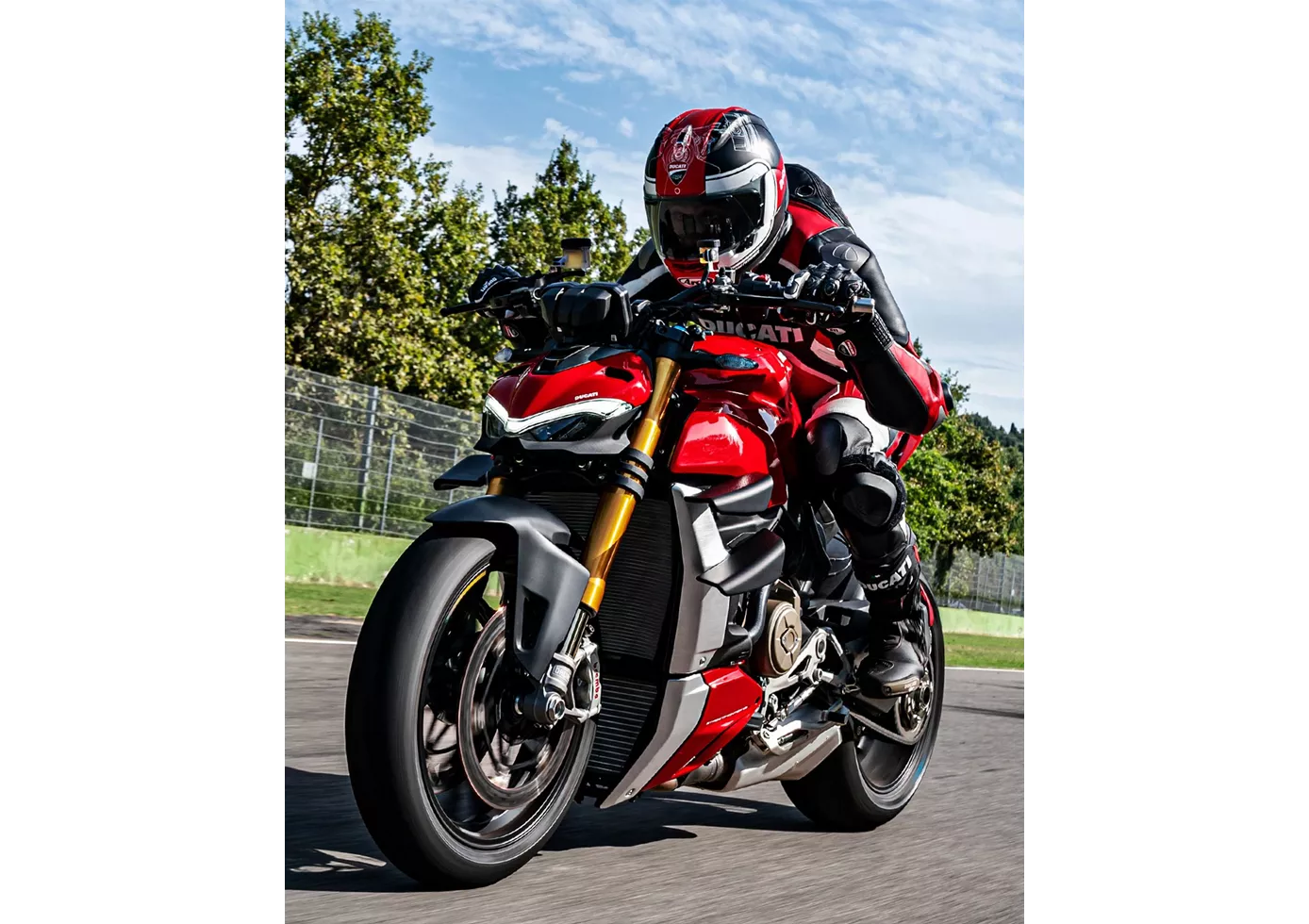
The bike has taken much of its sporty roots from the Panigale. This will delight friends of the streetfighter. Electronics and engine power are superior, the chassis is radically fast and the machine rules in stopwatch duels. However, it has rough edges. The big surprise: you sit well on the noble beast and can actually ride it on extended tours!
Yamaha MT-10 SP 2019

The Yamaha MT-10 SP inspires with a high degree of perfection combined with a truckload of emotion. Rarely do Japanese manufacturers succeed in penetrating so deeply into the domain of Europeans. The bike rides very nastily when needed, but can also be used quite civilly in city traffic. On top of that, the electronically adjustable Öhlins suspension offers a lot of riding comfort. All in all, an outstanding all-rounder that can do much more than just look bad.
Price Comparison Avarage Market Price Ducati Streetfighter V4 S vs Yamaha MT-10 SP
There are a few key differences between a Ducati Streetfighter V4 S 2020 and a Yamaha MT-10 SP 2019. There are the same number of bikes of both models available on the 1000PS.de marketplace, specifically 14. It takes less time to sell a Ducati Streetfighter V4 S with 62 days compared to 92 days for a Yamaha MT-10 SP. Since model year 2020 1000PS.de editors have written 17 reviews for the Ducati Streetfighter V4 S and 18 reviews for the Yamaha MT-10 SP since model year 2017. The first review for the Ducati Streetfighter V4 S was published on 3/26/2020 and now has more than 73,600 views. This compares to more than 28,600 views for the first review on Yamaha MT-10 SP published on 10/4/2016.
